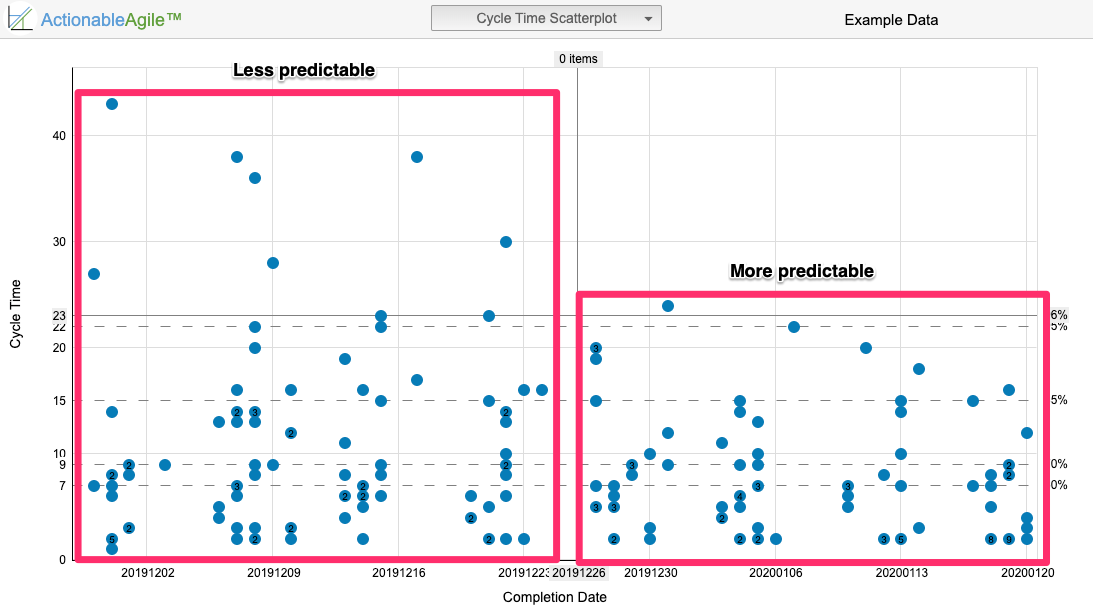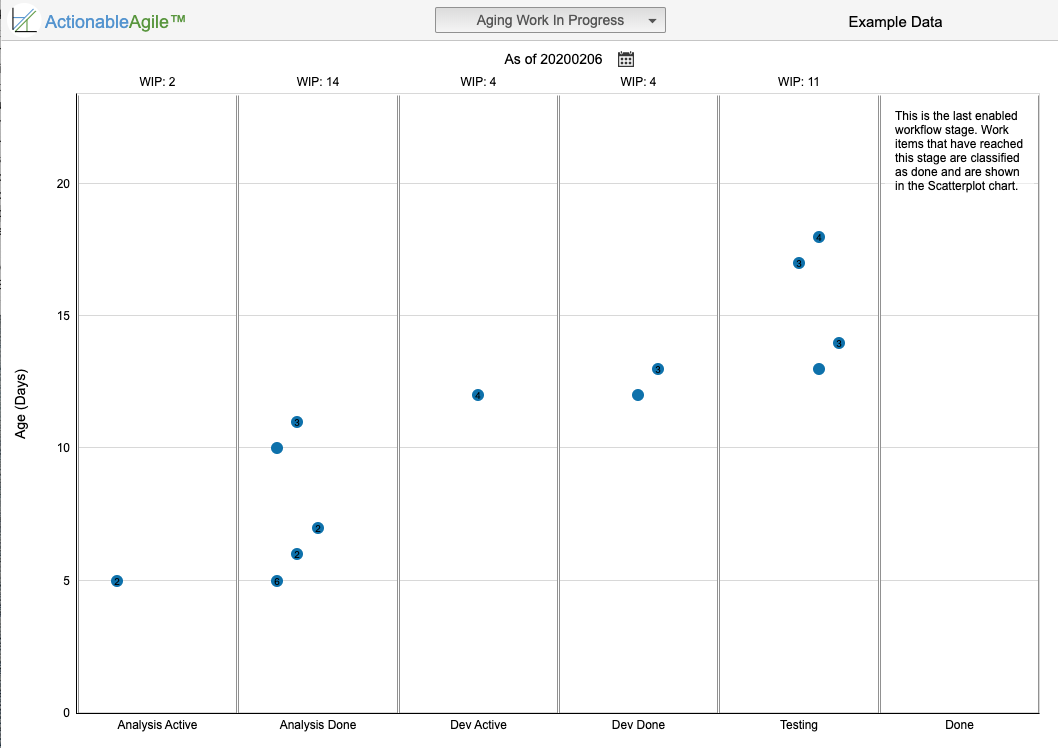One of the things leaders often say they want most is predictability. Predictability is defined as the consistent repetition of a state, course of action, behavior, or the like, making it possible to know in advance what to expect. If you read that definition carefully, you may notice that the words good or bad are missing. Predictability itself is value-neutral. Being predictable is the attainment of the skills required to allow customers and other interested parties to have the advantage of knowing what to expect.
Now, we all can think of an organization that we think of as predictably horrible at customer service (erm… certain cable TV companies come to mind) or a restaurant that has predictably bad food. So, it is fair to say that leaders want value-driving predictability, especially in regards to an organization’s ability to deliver value to its customers on a regular basis.
How can we tell how predictable we are?
Pretty easily! You can tell how predictable you are just two pieces of data for each work item you finish: the date you started the work item and the date you finished it. Using that data, you can create a cycle-time scatterplot and get a very visual view of your predictability.

On a cycle-time scatterplot, each dot represents a single piece of work that was completed and where the dot is placed tells us how long it took to deliver that piece of work. This duration is referred to as cycle time. If more than one item finishes on the same day with the same cycle time, you just make the dot bigger and write the number of items on the dot.
In the beginning, when you have little to no predictability, the dots will be widely scattered all over the chart. As you learn how to become more predictable, the range of space the dots inhabit will become vertically narrower.

Don't miss out on reading my previous blog post “Create Faster and More Accurate Forecasts using Probabilistic Forecasting” to learn how to use this chart to make your forecasts reliable, even when your work and circumstances aren’t varied.
Two things you can do daily to be more predictable!
Now, that you know how to determine your level of predictability, you probably want to know what to do to improve it! Well, there are two simple things that you can do each day to improve your predictability:
Thing 1: Stop starting, start finishing
One of the biggest culprits of lengthening cycle times is multi-tasking. Well, we think we’re multitasking but what we’re actually doing is something called task switching — putting one thing aside to work on another and then coming back to the first thing later.
Implementing a limit to the number of things you will work on at a time can help individuals, teams, or even organizations focus on fewer items at a time, allowing them to deliver the items faster and, usually, with better quality. This limit is called a work-in-progress limit, or WIP limit, and is a key component of a Kanban system.

These limits can be implemented per person, per team as a whole, or even by activity in a workflow or value stream as seen above.
The important thing is that you establish a threshold and adhere to it as often as possible. So, each day, as you make choices about what to work on, finish what you’ve already started before you pick up anything new!
Thing 2: Pay attention to the age of work-in-progress
Once you have WIP limits in place you can start an effort to make sure no one work item ever sits and ages for too long.
To do this, you need to be able to see how old an item is. If you are tracking your cycle time, you already know when you started an item and you probably know the current date. With those two data points, you can get a good picture of how old your work-in-progress is. That information can be used in the daily scrum to ensure you prioritize work that’s in danger of getting old.

Much like the cycle time scatterplot, the Aging Work In Progress chart has a dot for each work item but the axes are different. The Y-axis is the age of the item so far. The X-axis represents which stage of your workflow the item is in. The dot is placed at the intersection of these two data points.
It is important to remember that all of these dots will (hopefully) end up as a dot on your cycle-time scatterplot. So, we want to make sure they don’t get super old and, even better, that they stay within an expected range.
When you take the percentile lines from your cycle time scatterplot and overlay them onto your Aging Work in Progress chart, you can get a much more detailed understanding of how at risk an item is for finishing in your expected timeframe.

The percentile lines tell you how likely your work is to finish by a certain age. So, if you are at the very beginning of your process for an item and it is already older than 60% of your items are when they’re finished, you know that item is at risk of negatively impacting your predictability. And, while one item may be nothing to freak out about, if this happens often enough, you become less predictable and have to provide longer estimates to your stakeholders.
So, if you’ve been looking for a leading indicator of predictability, the Aging Work in Progress chart is just what you asked for!
Yes, you can really do it!
What’s great about this is that you really don’t need to be a data geek and you don’t need to be using a specific methodology, framework, or toolset to improve your predictability.
By focusing on finishing over starting by implementing WIP limits and working on older items first, you can greatly improve your predictability without a huge overhaul of your processes — though it might end up being the start of something quite transformative!
